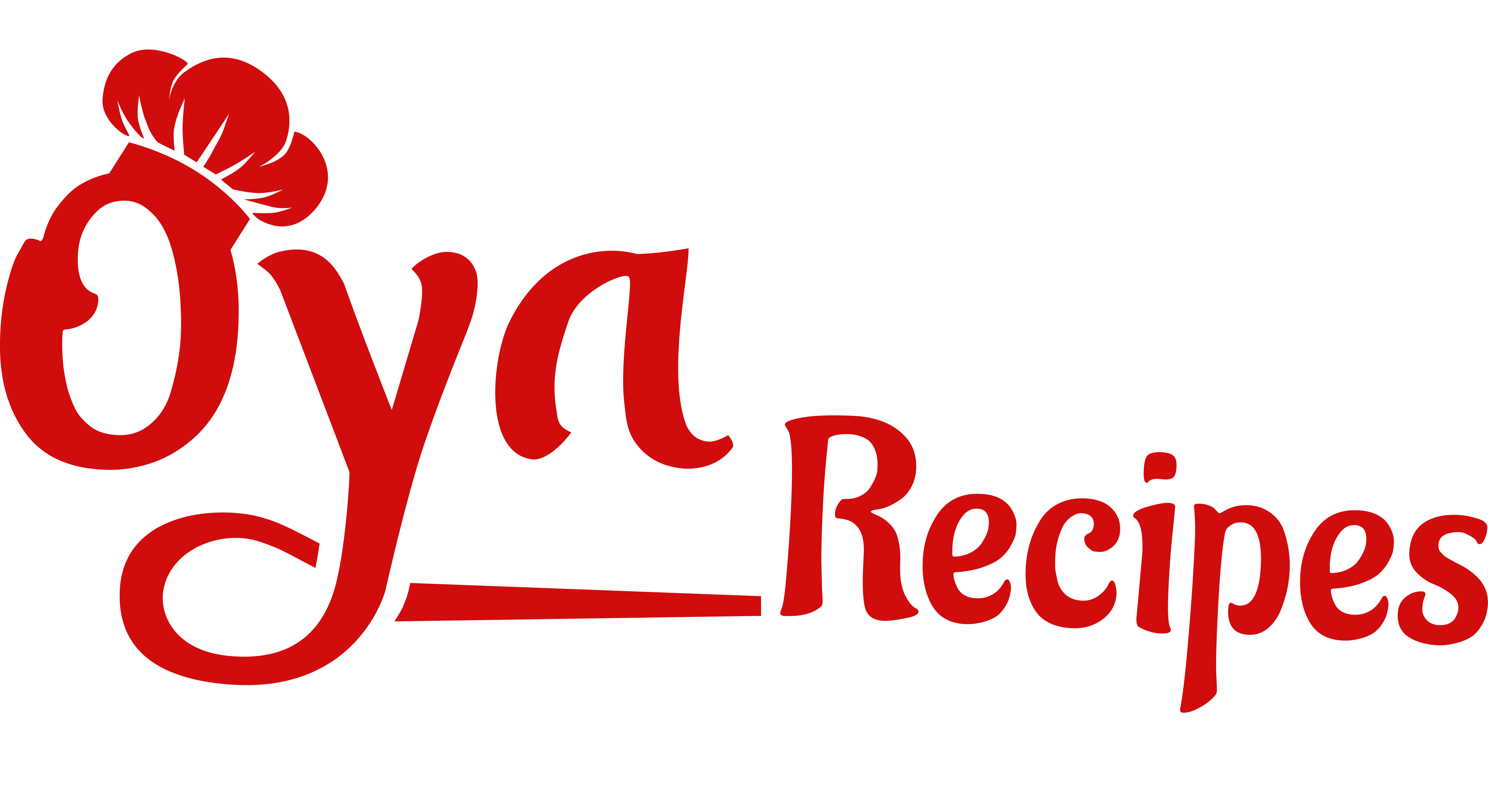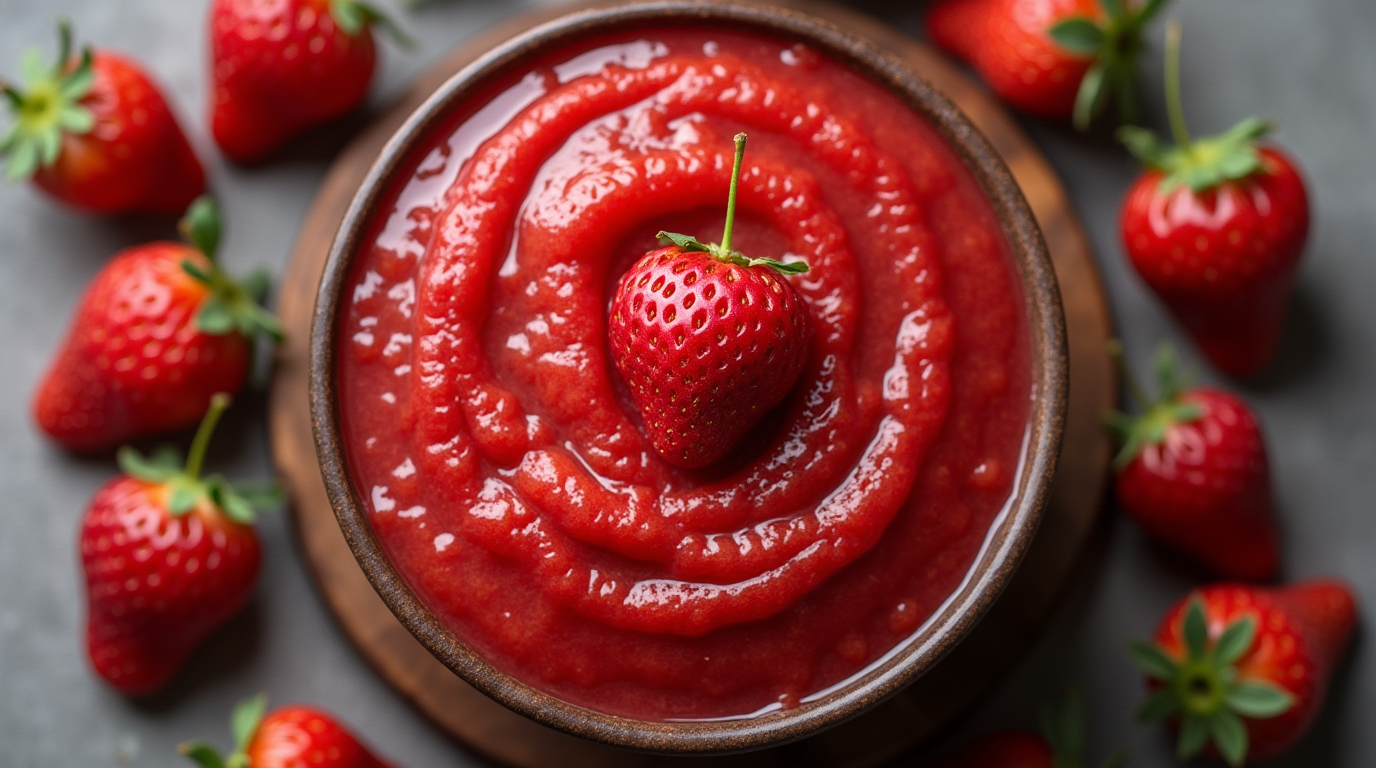Discover how to make strawberry puree, its uses, tips, and storage methods for perfect homemade treats.
Strawberry puree is a versatile ingredient used in a variety of dishes, from smoothies and desserts to sauces and salads. In this article, we will explore everything you need to know about strawberry puree, from what it is and how to make it to its various culinary uses and health benefits. Whether you’re a home cook or a professional chef, mastering the art of making strawberry puree can elevate your recipes and add natural sweetness to your meals.
What is Strawberry Puree?
Strawberry puree is basically fresh or frozen strawberries blended until smooth. Altogether, it captures the pure essence of ripe strawberries in a luscious, spoonable form. Unlike jam, it contains no thickening agents or large amounts of sugar. Instead, strawberry puree highlights the natural taste and aroma of the fruit.
Comparatively, strawberry syrup tends to include more sugar and has a thinner consistency. Conversely, jam incorporates pectin or other thickeners, resulting in a spreadable texture. Strawberry puree, however, retains the fruit’s inherent brightness and fresh flavor. Accordingly, it provides a simple base for many culinary creations.
Certainly, strawberry puree differs from compotes or sauces that might include chunks or additions like spices. Instead, it is smoothly blended and strained if desired. Notwithstanding these differences, all forms of strawberry products have their own unique uses and characteristics.
Selecting and Preparing Strawberries
When making strawberry puree, choosing the best berries matters. Ideally, look for fresh, ripe strawberries with a bright red hue and minimal white at the stem. Initially, peak strawberry season occurs from late spring to early summer, ensuring maximum flavor and sweetness. However, if fresh berries are unavailable, frozen strawberries can be an equally good choice.
Before blending, rinse strawberries under cool running water. Afterwards, remove the green hull and any blemished parts. Additionally, pat them dry with a clean towel to prevent adding extra water. While it may seem like a small step, drying the berries ensures a more concentrated flavor.
Still, not all strawberries taste identical. Some varieties offer a sweeter flavor, while others have a tart edge. Therefore, taste a berry before starting. Then, adjust any added sweeteners accordingly. During preparation, ensure your knife is sharp to avoid bruising the fruit. Eventually, this careful process preserves color, taste, and overall quality.
How to Make Strawberry Puree Step-by-Step
Ingredients:
- 1 pound fresh strawberries (or frozen, thawed)
- Sweetener to taste (e.g., sugar, honey, maple syrup)
- Optional: a squeeze of lemon juice for brightness
Equipment:
- High-speed blender or food processor
- Fine-mesh strainer (if seedless puree is desired)
- Measuring cups and spoons
- Spatula
Method:
- Firstly, wash and hull the strawberries. Pat them dry.
- Secondly, place the berries in the blender. If using a sweetener, add it now, starting with a small amount.
- Thirdly, blend until smooth, scraping down the sides as needed. If the mixture seems too thick, add a spoonful of water.
- Fourthly, taste the puree and adjust sweetness. Then, add a splash of lemon juice if desired for added freshness.
- Finally, if you prefer a seedless puree, pass it through a fine-mesh strainer. Press gently with a spatula to extract all the juice.
Subsequently, store your finished strawberry puree in a clean container. It’s now ready to use in a variety of recipes. Basically, you have complete control over the texture, sweetness, and flavor.
Culinary Uses and Recipe Ideas
Strawberry puree finds a home in countless dishes. Comparatively, it’s more versatile than a simple jam or jelly. Nevertheless, it often enhances breakfast, dessert, and beverage recipes.
Breakfast Applications:
- Drizzle over pancakes or waffles for a fruity topping.
- Stir into yogurt or oatmeal for natural sweetness and color.
- Spread onto toast in place of jam.
Desserts and Baked Goods:
- Fill cakes and cupcakes with strawberry puree for a burst of flavor.
- Fold it into whipped cream or frosting for a pretty pink hue.
- Incorporate into cheesecake batters or mousse for a fruit layer.
Beverages and Cocktails:
- Blend with milk and ice cream for a strawberry milkshake.
- Stir into sparkling water for a homemade soda.
- Mix into cocktails or mocktails for a sweet, tangy twist.
Savory Dishes:
- Brush onto grilled meats as a fruity glaze.
- Whisk into a vinaigrette for a bright salad dressing.
- Pair with creamy cheeses as a fruity dip.
Ultimately, strawberry puree adapts to your creativity. Moreover, you can experiment with new combinations. Also, try mixing it with other fruit purees for layered flavors.
Health Benefits of Strawberry Puree
Strawberry puree offers numerous health benefits, thanks to its rich nutrient profile.
1. Rich in Antioxidants
Strawberries are loaded with antioxidants, which help protect your body from oxidative stress and free radical damage. These antioxidants support heart health, reduce inflammation, and improve skin appearance.
2. High in Vitamin C
Strawberries are an excellent source of Vitamin C, which boosts your immune system, aids in collagen production for skin health, and promotes wound healing.
3. Promotes Digestive Health
Strawberries are rich in fiber, which supports digestion and promotes healthy bowel movements. The fiber in strawberry puree can help regulate your digestive system.
4. Supports Heart Health
The antioxidants and anti-inflammatory compounds in strawberries can improve heart health by reducing oxidative damage and lowering blood pressure.
Storage, Freezing, and Shelf Life
Strawberry puree is best enjoyed fresh. However, if you have leftovers, there are ways to store it. Straightaway, transfer it to an airtight container and place it in the refrigerator. Typically, it stays fresh for about three to five days. Afterward, discard any puree that shows signs of mold or smells off.
If you have a large batch, consider freezing some for later use. Initially, pour the puree into ice cube trays. Then, once frozen, transfer the cubes to a freezer-safe bag. This method allows you to thaw only what you need. Consequently, frozen strawberry puree can last up to three months.
When thawing, do so in the refrigerator or under cool running water. Till it’s fully thawed, avoid using heat, which can alter the flavor. Once thawed, taste and adjust sweetness if needed, as freezing can sometimes dull flavors slightly. Generally, proper storage and handling ensure a safe and enjoyable product.
Tips for Enhancing Flavor of Strawberry puree
Although strawberry puree is flavorful by itself, you can enhance it further. Often, adding a small amount of lemon or lime juice brightens the taste. Because citrus acidity balances sweetness, it results in a more vibrant and lively flavor profile.
Additionally, consider sweeteners like honey or maple syrup instead of sugar. Also, these natural sweeteners impart subtle notes that complement the strawberry’s taste. Comparatively, artificial sweeteners may not provide the same depth.
Likewise, try blending in fresh herbs for a gourmet twist. For example, basil or mint adds complexity. Significantly, use these ingredients sparingly so as not to overpower the fruit. On the whole, minor tweaks transform ordinary puree into a culinary masterpiece.
Consistency Adjustments and Variations
Different recipes may call for thicker or thinner strawberry puree. Initially, if you desire a thicker texture, reduce liquid additions or simmer the puree over low heat to concentrate it. Conversely, for a thinner consistency, stir in a small amount of water or fruit juice.
If you dislike the seeds, strain the puree through a fine-mesh sieve. Accordingly, this creates a velvety texture suitable for sauces and desserts. Notwithstanding the extra step, it results in a polished final product.
When fresh strawberries aren’t available, frozen berries make a worthy substitute. Previously frozen berries may contain more water, so adjust the texture as needed. Moreover, consider adding other fruits like raspberries or cherries for a mixed berry puree. Ultimately, these variations allow you to tailor the puree to your taste and menu.
Common Mistakes and How to Avoid Them
Even with simple steps, mistakes can happen. Admittedly, blending the puree too long can trap excess air, resulting in a foamy texture. Thus, blend just until smooth, then stop.
Also, adding too much sugar upfront might make the puree overly sweet. Instead, add sweetener gradually and taste as you go. Besides, remember that you can always add more, but you cannot remove it once added.
Another pitfall involves not tasting the strawberries before blending. Since their sweetness varies, adjusting flavor mid-process is easier than correcting it afterward. Consequently, sample your fruit and proceed accordingly. Lastly, keep in mind that overcooking or heating the puree too intensely can reduce freshness. Therefore, heat it gently if thickening and preserve its bright flavor.
Strawberry Puree vs. Strawberry Syrup: What’s the Difference?
While both strawberry puree and strawberry syrup are made from strawberries, they differ in texture, sweetness, and use.
Texture and Consistency
- Strawberry Puree: Smooth, thick liquid made by blending fresh or frozen strawberries.
- Strawberry Syrup: A sweet, thin liquid made by boiling strawberries with sugar and water.
Flavor
- Strawberry Puree: Naturally sweet with a fresh, fruity taste.
- Strawberry Syrup: Much sweeter due to added sugar, and has a more syrupy texture.
Uses
- Strawberry Puree: Ideal for smoothies, desserts, and savory dishes where you want the fresh flavor of strawberries.
- Strawberry Syrup: Often used as a topping for pancakes, waffles, or as an ingredient in drinks.
Strawberry Puree vs. Strawberry Jam: Key Differences
Although both are made from strawberries, strawberry puree and strawberry jam serve different culinary purposes.
Strawberry Puree
- Made from fresh or frozen strawberries blended into a smooth liquid.
- No added pectin, sugar, or preservatives.
- Used primarily as a base for sauces, smoothies, and desserts.
Strawberry Jam
- Made by cooking strawberries with sugar and pectin to create a thick, spreadable texture.
- Contains added sugar and preservatives.
- Primarily used as a spread on toast, in sandwiches, or as a topping for desserts.
Frequently Asked Questions (FAQs)
What is strawberry puree made of?
Strawberry puree is basically fresh or frozen strawberries blended until smooth. Sometimes people add a sweetener, but it can also be plain. Because it uses whole berries, it retains the fruit’s natural taste, color, and aroma.
How do you make a puree?
Making puree involves washing and hulling fresh fruit, placing it in a blender, and processing until smooth. Afterwards, strain if you prefer a seedless texture. Comparatively, other purees follow similar steps but may involve cooking the fruit first. Specifically for strawberry puree, no cooking is needed unless you want to concentrate the flavor.
What is the difference between strawberry puree and strawberry syrup?
The primary difference lies in consistency and sweetness. Strawberry puree uses whole blended strawberries, maintaining a thicker, more natural texture. Strawberry syrup, conversely, usually contains more sugar and is reduced until it’s runny and sweet. Therefore, syrup tastes sweeter, while puree tastes fresher and more fruit-forward.
Is strawberry puree the same as jam?
No, jam involves cooking fruit with sugar and pectin to create a spreadable preserve. Strawberry puree, on the other hand, is uncooked or lightly processed and contains fewer additives. Though both feature strawberries, jam is thicker and sweeter, while puree feels lighter and fresher.
Conclusion
Strawberry puree is an undeniably versatile ingredient that enhances countless recipes. Afterward, you can add it to breakfasts, desserts, beverages, and even savory dishes. Overall, it’s a straightforward process to prepare at home, allowing you to control flavor, sweetness, and texture.
Certainly, the health benefits of strawberries come along for the ride, and proper storage methods ensure your puree lasts longer. Additionally, simple tweaks like citrus juice or natural sweeteners can elevate its flavor. Conversely, straining or mixing with other fruits provides endless variety.
Comparatively, when you embrace homemade strawberry puree, you gain freedom and creativity. Finally, let your culinary imagination run wild. Soon, you’ll find countless ways to enjoy the sweet, vibrant taste of this simple yet beloved treat.

